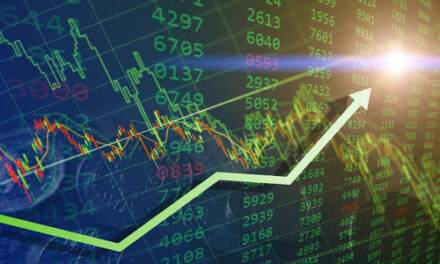Even with stock prices plummeting, inflation soaring, and the economy potentially about to enter recession…Now is not the time to be fearful.When you’re fearful, you’re unfocused. Your mind loses control. In volatile markets, that’s a recipe for disaster.Fearful traders don’t make sound decisions. They buy high, sell low, and generally do a terrible job of holding on to their wealth.Strange as it might seem, it’s much better to get greedy in a time like this.Greed actually helps focus our minds during downtrends. In a bear market, greedy traders build cash and watch for the next opportunity, while fearful traders give in to their emotions and act on whims.You see, being greedy isn’t just about pursuing gains. It also means making moves to hold on to your wealth so you’re able to buy when the downtrend ends.As you’ll learn today, I’m not the only one who thinks greed is good…Because over the next few months, the most important financial institution in the world will reward the greediest traders for keeping this mindset — even in a bear market…
$11 Trillion, Wiped Out
Of course, I’m talking about the Federal Reserve.The Fed’s job isn’t necessarily to watch the stock market. But they do. And we know they do because they talk about the wealth effect.According to former Fed governor Edward Gramlich, every $1 trillion gain in the stock market leads to a $40 billion economic boost. That’s a GDP increase of about 0.2% a year.And every additional dollar of household wealth results in a permanent rise in household consumption of about three to five cents.But in the last six months, the stock market’s decline wiped out $11 trillion in wealth. That equates to a nearly half-trillion hit to the economy.Home prices are offsetting stock market losses — for now. But higher interest rates will make mortgages more expensive, and price many potential buyers out of the market. Lower demand slows the housing market. These are negative wealth effects that the Fed doesn’t want to happen.So, smart economists at the Fed are modelling all this and considering what they can do to stem the bleeding.They know GDP is growing slowly. There’s not much they can do to change that.However, they also know a stock market decline could trigger a slowdown in spending and make a recession even worse.Fortunately, this is the one area where the Fed can have an almost immediate impact…If stock prices get too low, the Fed will rescue the market.And there’s one tool I trust above any other to help us maximize the profit from this rescue plan.
The Fed to the Rescue
There are a couple ways the Fed could step in and rescue the stock market.For one, they could cut interest rates. But this is highly unlikely. Cutting rates before next year will cause traders to lose confidence in the Fed. That would send stocks even lower.So, the Fed will continue raising rates. But they can slow down. Raising rates by 0.25% instead of 0.5% would support the market and fight inflation while preserving the Fed’s credibility.The Fed can also increase the money supply. Or they can work with Wall Street to increase liquidity.You won’t see any of this in the headlines, though. The Fed will be working behind the scenes to rescue the market.And while we can’t see exactly what the Fed is doing behind the scenes, we can see the effects pop up in the charts.And that’s where my Greed Gauge comes into play.The Greed Gauge is ideal for an environment like this. It detects spikes of greed in stock prices, telling you the exact moment you should get aggressive in the stock market… and warning you when it’s time to sell again.There’s no other indicator I trust to time bear market rallies with this level of accuracy.And on May 31, I’m revealing the full details of it for the first time in an exclusive presentation I’m calling “Greed Gauge Revealed.”It’s a private event, and space is limited. But I want our True Options Masters readers to have priority access. So you can sign up today, before anyone else, right here.I look forward to seeing you there, and showing you how the Greed Gauge is perfect for this market.
Regards, Michael Carr, CMT, CFTeEditor,
Michael Carr, CMT, CFTeEditor,
P.S. I highly urge you to sign up for Greed Gauge Revealed as soon as possible.Over the next week, my publisher and I will be sharing a ton of blog posts and videos all about the Greed Gauge.These resources, completely free, offer an inside look at the Greed Gauge before the masses are able to see it. You can think of them as a trading bible for times of high volatility.
Chart of the Day:The Nasdaq Is Catching Its Breadth
By Mike Merson, Managing Editor, True Options Masters

(Click here to view larger image.)
The number of stocks in the Nasdaq 100 above their 200-day moving average — aka the index’s “breadth” — is at 14.7. The lowest point since the pandemic panic.That’s not great. When a majority of stocks aren’t participating in a bullish trend, it’s obviously pretty bearish for the market.But, what we can also note here is breadth has rarely been this low, and never stayed this low for long, since the 2008 crash. In 2011, early 2016, late 2018, and 2020, the Nasdaq briefly hit these levels before bouncing back in just a matter of months.That could mean we’re near a bottom. Or, if we’re looking at another 2008, it could mean we’re about to drop a LOT lower.Based on how accommodative the Fed has been lately — and the lack of a major systemic blowup in the markets (so far) — I have to lean more toward this being an intermediate-term low point for both breadth, and tech stocks.
Regards, Mike MersonManaging Editor, True Options Masters
Mike MersonManaging Editor, True Options Masters










